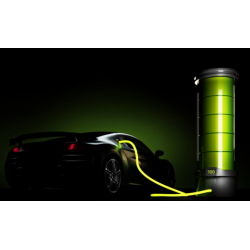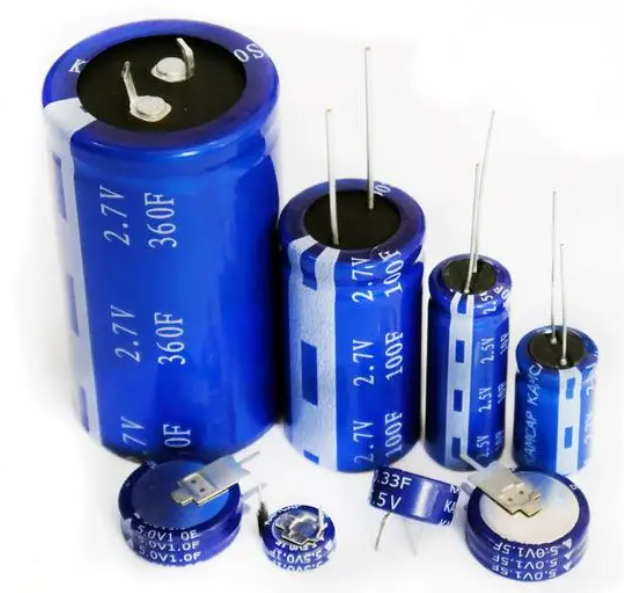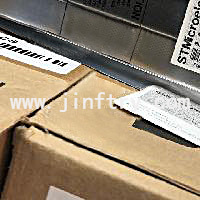What is the difference between supercapacitors and ordinary capacitors, and what is the difference between them and batteries?

What is the difference between supercapacitors and ordinary capacitors, and what is the difference between them and batteries?
A capacitor is a widely used electronic component that stores electrical charge. Capacitors come in many sizes and types depending on usage, construction, and materials. Here are some common types of capacitors and their basic differences:
Classified by media material:
Electrolytic capacitors: mainly include aluminum electrolytic capacitors and tantalum electrolytic capacitors. Their advantage is large capacity, but the frequency resistance and frequency characteristics are not as good as other types. Commonly used in DC circuits, there are positive and negative polarity requirements for voltage.
Ceramic capacitors: It has the characteristics of small size, good high frequency performance and high stability. Very versatile.For example(02013A100GAT2A ,02013A120GAT2A ,02013A220JAT2A ..)
Film capacitors: such as polyester, polypropylene, etc. Has good frequency characteristics.
Paper capacitors: paper is used as the medium, which is less used now.
Tantalum capacitors: small capacity, but small, stable and long life.
Classified by polarity:
Polarized capacitors: such as electrolytic capacitors, must be connected in accordance with the specified polarity, otherwise it may explode.
Non-polar capacitors: such as ceramics, films, etc., there is no difference between positive and negative.
Classified by fixed method:
Fixed capacitor: the capacitance is fixed and cannot be adjusted.
Adjustable capacitor: the capacitance can be adjusted slightly, and is often used to tune circuits.
How to distinguish the types of capacitors:
Identification: Most capacitors are identified with their capacitance, withstand voltage and type. For example, an electrolytic capacitor may have "220uF 16V" written on it, indicating that it has a capacity of 220 microfarads and a withstand voltage of 16 volts.
Shape: Different types of capacitors have unique shapes and sizes. For example, electrolytic capacitors are usually cylindrical and ceramic capacitors are usually small and flat.
Pins and Case: Electrolytic capacitors usually have two pins, one positive and one negative. Ceramic and film capacitors generally have no distinct positive and negative polarity.
Capacitors vs Supercapacitors vs Batteries: Understanding the Differences
What is a supercapacitor?
Supercapacitors For example( 107DER2R5SBG , 157DCN2R7M , 2.5DMA190M22X65 ,2.5DMB4R7M10X20 ,205DCN2R7S , 205DCN5R5M , 207DER2R5SDH ..) also known as electrochemical capacitors, electric double layer capacitors, gold capacitors, and farad capacitors, are electrochemical components developed in the 1970s and 1980s to store energy through polarized electrolytes.
It is different from traditional chemical power sources. It is a power source with special properties between traditional capacitors and batteries. It mainly relies on electric double layers and redox pseudocapacitive charges to store electrical energy. However, no chemical reaction occurs in the process of its energy storage. This energy storage process is reversible, and it is precisely because this supercapacitor can be repeatedly charged and discharged hundreds of thousands of times.
The exact details of supercapacitor construction depend on the application and use of the supercapacitor. These materials may vary slightly due to manufacturer or specific application needs. The commonality of all supercapacitors is that they all contain a positive electrode, a negative electrode, and a diaphragm between the two electrodes. The electrolyte fills the two pores separated by the two electrodes and the diaphragm.
The structure of a supercapacitor is shown in the figure, which is composed of a porous electrode material with a high specific surface area, a porous battery separator and an electrolyte. The separator should meet the conditions of having the highest possible ionic conductance and the lowest possible electronic conductance, and is generally an electronic insulating material with a fibrous structure, such as a polypropylene film. The type of electrolyte is selected according to the nature of the electrode material.

According to the different energy storage mechanism, it can be divided into the following two categories:
1. Electric double layer capacitance: It is generated by the confrontation of charges caused by the directional arrangement of electrons or ions at the electrode/solution interface. For an electrode/solution system, an electric double layer will form at the interface between the electron-conducting electrode and the ion-conducting electrolyte solution.
When an electric field is applied to the two electrodes, the anions and cations in the solution migrate to the positive and negative electrodes respectively, forming an electric double layer on the surface of the electrodes; after the electric field is withdrawn, the positive and negative charges on the electrodes phase with the oppositely charged ions in the solution The attraction stabilizes the electric double layer and generates a relatively stable potential difference between the positive and negative electrodes.
At this time, for a certain electrode, an opposite ion charge equal to the charge on the electrode will be generated within a certain distance (dispersion layer) to keep it electrically neutral; when the two poles are connected to the external circuit, the charge on the electrode Charge migration generates current in the external circuit, and ions in the solution migrate to the solution to be electrically neutral. This is the charging and discharging principle of the electric double layer capacitor.
2. Faraday quasi-capacitance: Its theoretical model was first proposed by Conway. It is a two-dimensional or quasi-two-dimensional space on the surface of the electrode and near the surface or in the bulk phase. Electroactive substances undergo underpotential deposition and highly reversible chemical adsorption occurs. Desorption and redox reactions result in a capacitance that is related to the electrode charge potential.
For Faraday quasi-capacitors, the process of storing charges not only includes the storage on the electric double layer, but also includes the oxidation-reduction reaction between electrolyte ions and electrode active materials.
When the ions (such as H+, OH-, K+ or Li+) in the electrolyte diffuse from the solution to the electrode/solution interface under the action of an applied electric field, they will enter the active oxide on the electrode surface through the redox reaction on the interface. In the bulk phase, a large amount of charge is stored in the electrode.
During discharge, the ions that enter the oxide will return to the electrolyte through the reverse reaction of the above redox reaction, and the stored charge will be released through the external circuit. This is the charging and discharging mechanism of the Faraday quasi-capacitor.
Advantages of supercapacitors:
1. The capacitance of the Farad level can be reached in a very small volume;
2. No need for special charging circuit and control discharge circuit;
3. Compared with the battery, overcharging and overdischarging will not have a negative impact on its life;
4. From the perspective of environmental protection, it is a kind of green energy;
5. The supercapacitor can be welded, so there are no problems such as weak battery contact;
Disadvantages of supercapacitors:
1. Improper use will cause electrolyte leakage and other phenomena;
2. Compared with aluminum electrolytic capacitors, its internal resistance is relatively large, so it cannot be used in AC circuits;
The reason why supercapacitors are called "super":
1. A supercapacitor can be regarded as two non-reactive porous electrode plates suspended in the electrolyte. When electricity is applied to the plates, the positive plate attracts negative ions in the electrolyte, and the negative plate attracts positive ions. In fact, two capacitors are formed. In the permanent storage layer, the separated positive ions are near the negative plate, and the negative ions are near the positive plate.
2. Supercapacitors store energy in the separated charges. The larger the area used to store charges, the denser the separated charges, the greater the capacitance.
3. The area of the traditional capacitor is the flat plate area of the conductor. In order to obtain a larger capacity, the conductor material is rolled very long, and sometimes a special organizational structure is used to increase its surface area. Traditional capacitors use insulating materials to separate its two pole plates, usually plastic films, paper, etc. These materials are usually required to be as thin as possible.
4. The area of the supercapacitor is based on the porous carbon material. The porous structure of this material allows its area to reach 2000m2/g, and a larger surface area can be achieved through some measures. The distance that supercapacitor charges separate is determined by the size of the electrolyte ions that are attracted to the charged electrodes. This distance (<10 Å) is smaller than that achievable with traditional capacitor film materials.
5. The huge surface area and the very small charge separation distance make the supercapacitor have a surprisingly large electrostatic capacity compared with traditional capacitors, which is where its "super" lies

Controlling the discharge of supercapacitors:
The resistance of the supercapacitor hinders its rapid discharge. The time constant τ of the supercapacitor is 1~2s, and it takes about 5τ to completely discharge the resistance-capacitance circuit. In fact, it can take hours to fully discharge the residual charge).
Discharge control time:
Supercapacitors can charge and discharge quickly, the peak current is limited only by their internal resistance, and even a short circuit is not fatal. In fact, it depends on the size of the capacitor unit. For matching load, the small unit can put 10A, and the large unit can put 1000A. Another limiting condition on discharge rate is heat, repeatedly discharging at a severe rate will heat up the capacitor and eventually cause an open circuit.
The difference between supercapacitors and batteries
Working principle: Supercapacitors store energy mainly through physical adsorption (such as electric double-layer capacitance), while batteries store energy through electrochemical reactions.
Charge and discharge speed: Supercapacitors can charge and discharge very quickly, while batteries typically charge and discharge more slowly.
Cycle life: Supercapacitors have a longer charge and discharge cycle life, which can reach hundreds of thousands or even millions of times, while the life of traditional batteries is relatively short.
Energy Density: Batteries typically have a higher energy density than supercapacitors, which means batteries can store more energy.
Power density: Ultracapacitors have a higher power density, which means they can output energy more quickly.
Range of use: Batteries are suitable for applications that need to supply power for a long time without high power requirements, while supercapacitors are suitable for applications that need to provide high power for a short period of time.
Cost and lifetime: The initial cost of supercapacitors may be higher than some types of batteries, but may be more economical in the long run due to their long cycle life.
Maintenance and Safety: Ultracapacitors generally require less maintenance and are relatively safer under extreme conditions.
Whether real-time clocks, memory retention or small buffer solutions: Supercapacitors have long been a popular replacement for batteries and accumulators. They are also increasingly replacing coin cells in measurement equipment, controls, utility counters and smart meters, as well as embedded boards in IoT, telematics and e-calling applications.
Ultracapacitors have a service life of at least 10 years and can be transported by air and road without restriction. Storage, charge cycles in the six-figure range, deep discharges, or low temperatures won't hurt its performance. Therefore, they are actually soldered firmly to the component, ruling out failures due to poor contact.

However, the capacity of supercapacitors can only provide energy for a few weeks without recharging. Lithium batteries, on the other hand, can last for 10 years, but without buffer capacitors they have problems with pulsed loads, such as smoke detectors and sensors networked via radio technology. A superior solution is to connect supercapacitors and batteries in parallel, for example as hybrid supercapacitors, which internally combine the technologies of supercapacitors and rechargeable Li-ion batteries.
A popular alternative is to install two separate components: a high-capacity, non-rechargeable lithium battery and a supercapacitor. Since the maximum voltage of a supercapacitor is 2.5V - 3.0V per cell, while a lithium battery has a voltage of 3.6V per cell, a series supercapacitor is required. Their balancing network and supercapacitor self-discharge can shorten the life of lithium batteries.
How to measure supercapacitor leakage current?
The leakage current of a supercapacitor, also known as the self-discharge current, is the current lost over time when the capacitor is fully charged. Excessive leakage current can indicate a performance problem with the capacitor. The following are the basic steps for measuring the leakage current of a supercapacitor:
Prepare tools and equipment:
A digital multimeter (DMM), or ammeter, capable of accurately measuring current in the microamp or nanoamp range.
A voltage source used to charge the supercapacitor.
Corresponding cables and connectors.
Capacitor pretreatment:
First, make sure the supercap is fully discharged. It can be discharged through a large resistance (such as several thousand ohms) to avoid damage caused by sudden discharge.
Afterwards, a voltage source is used to charge the supercapacitor to its nominal voltage.
Wait for stabilization time:
Once the capacitor is fully charged, disconnect the voltage source and wait for a period of time (say 30 minutes to a few hours) for the capacitor's voltage to stabilize. This is done because after the initial charge, there may be a momentary high leakage current, but it decreases and stabilizes over time.
Measuring leakage current:
Using the current measurement mode of the digital multimeter, connect the red probe to the positive terminal of the supercapacitor and the black probe to the negative terminal.
Record the displayed current value, which is the leakage current of the supercapacitor.
Comparison and Specifications:
Check that the measured leakage current is within the normal range according to the data sheet or specification sheet of the supercapacitor.
Precautions:
During the measurement, make sure not to short the two terminals of the capacitor as the supercapacitor stores a lot of energy and a short could cause sparks or damage.
For added safety, use proper gloves and eye protection when connecting or disconnecting capacitors.
Through the above steps, you should be able to measure the leakage current of the supercapacitor and determine whether it meets the specified performance criteria

Frequently asked questions about using supercapacitors
A supercapacitor, also known as a supercapacitor or superelectrolytic capacitor, is an electronic component capable of storing large amounts of electrical charge. They have higher power density but lower energy density than conventional batteries. The following are frequently asked questions about using supercapacitors:
Limited Energy Density: Supercapacitors have low energy density compared to conventional batteries such as Li-ion batteries. This means they cannot store energy for long periods of time in the same size as batteries.
Price: Although their prices are constantly falling, high-quality supercapacitors are usually more expensive.
Self-discharge rate: Ultracapacitors have a higher self-discharge rate than many other storage technologies, which can result in a loss of electrical energy when not in use.
Lifespan: While supercapacitors have a long cycle life, they are still subject to aging, which can reduce their performance over time.
Decreased capacity: After a large number of charge and discharge cycles, the capacity of supercapacitors may gradually decrease.
Operating temperature: Ultracapacitors may not perform well under certain extreme temperature conditions. Certain applications need to select a specific supercapacitor to ensure its operation within the required temperature range.
Size and Weight: Due to their lower energy density, certain applications may require larger or heavier supercapacitors to deliver the required energy.
Charging time: While supercaps charge quickly, make sure you use a proper charger to avoid damage.
Voltage Limits: Supercapacitors have a defined maximum voltage limit beyond which damage or reduced lifetime may occur.
Parallel and Series Complications: To achieve the desired voltage and capacity, multiple supercapacitors may need to be connected in parallel or in series. This requires ensuring that all capacitors share charge and discharge evenly to prevent premature aging or damage of some cells.
When selecting and using supercapacitors, these potential issues need to be considered and selected according to the needs of specific applications.
edit author:

Jinftry(Hong Kong registered company name: JING FU CAI (HONGKONG) INTERNATIONAL CO., LIMITED) was established in 2013, headquartered in Hong Kong, China, with a branch in Shenzhen, China. It is a global supplier of electronic components and a well-known and competitive electronic product distributor in Asia. Is also an excellent strategic partner of global ODM/OEM/EMS, able to quickly find authentic and traceable electronic components for customers to purchase.



